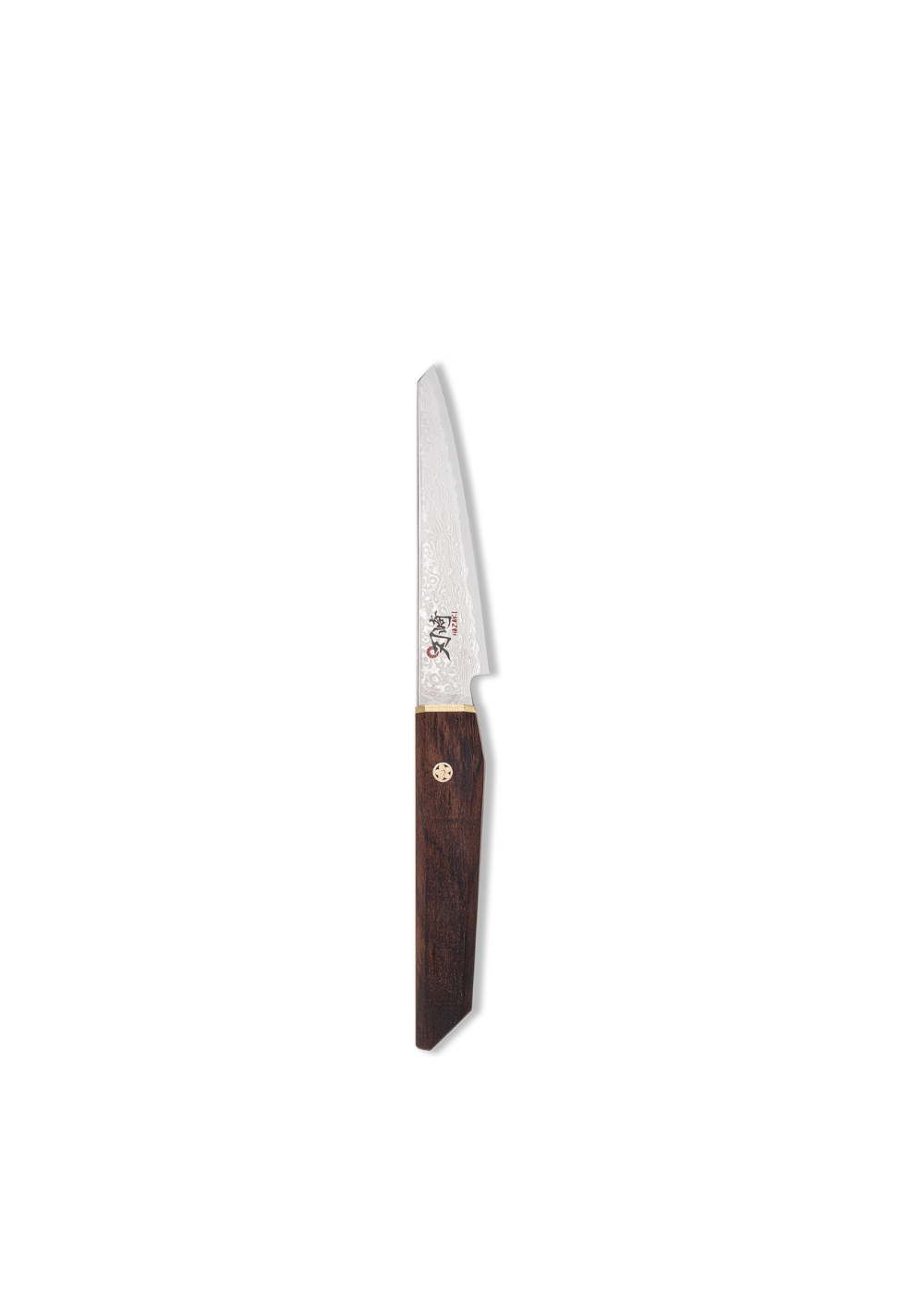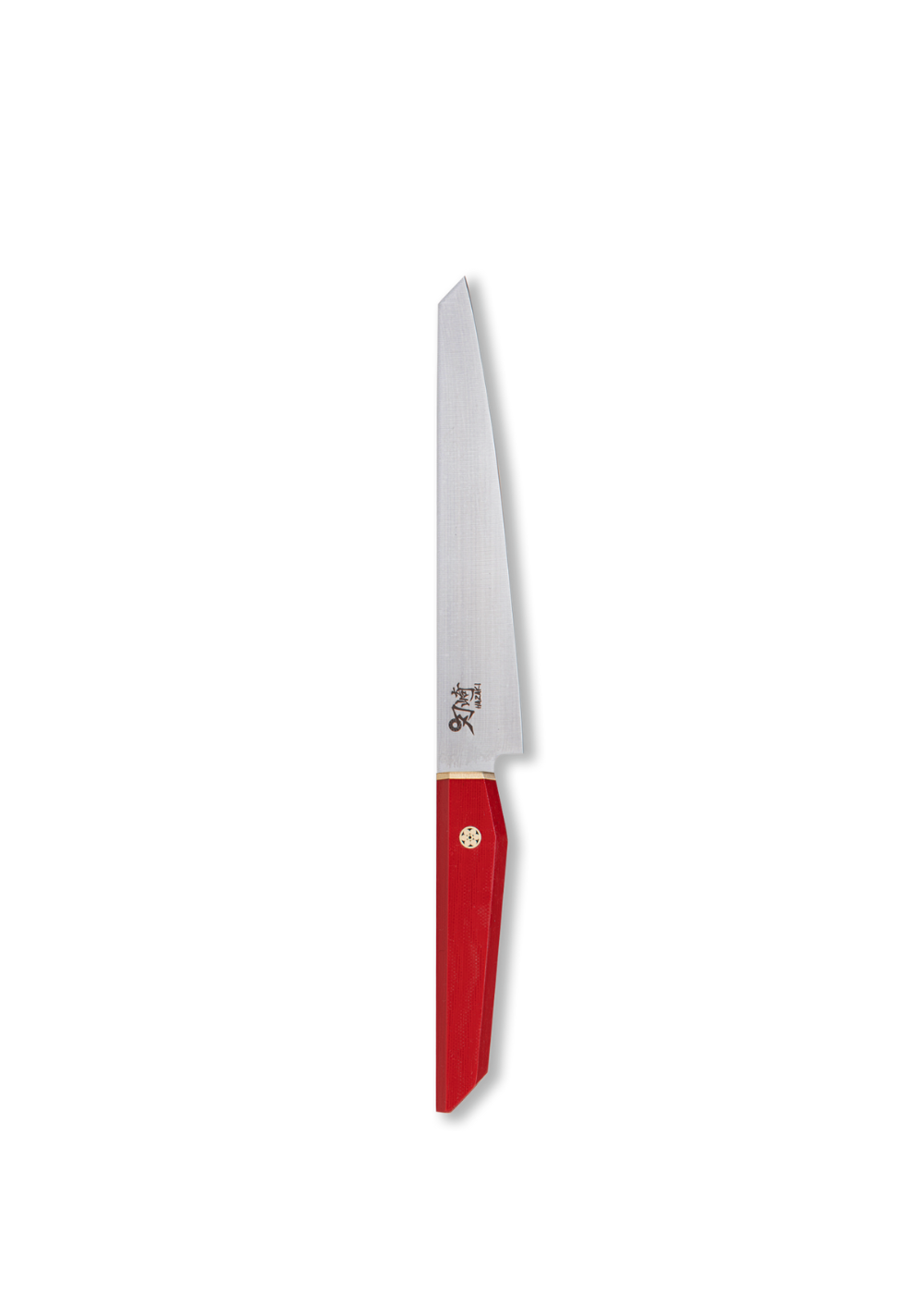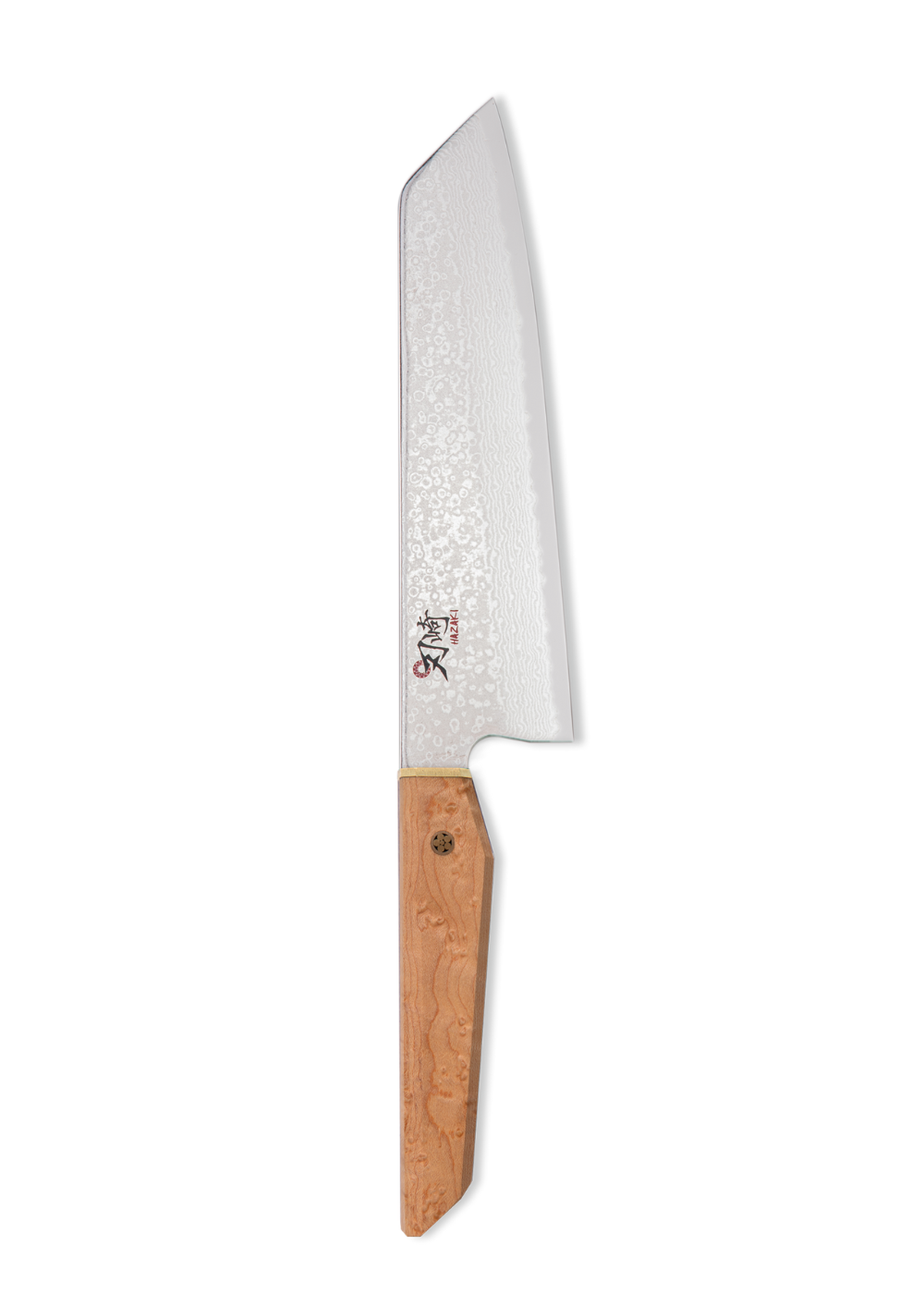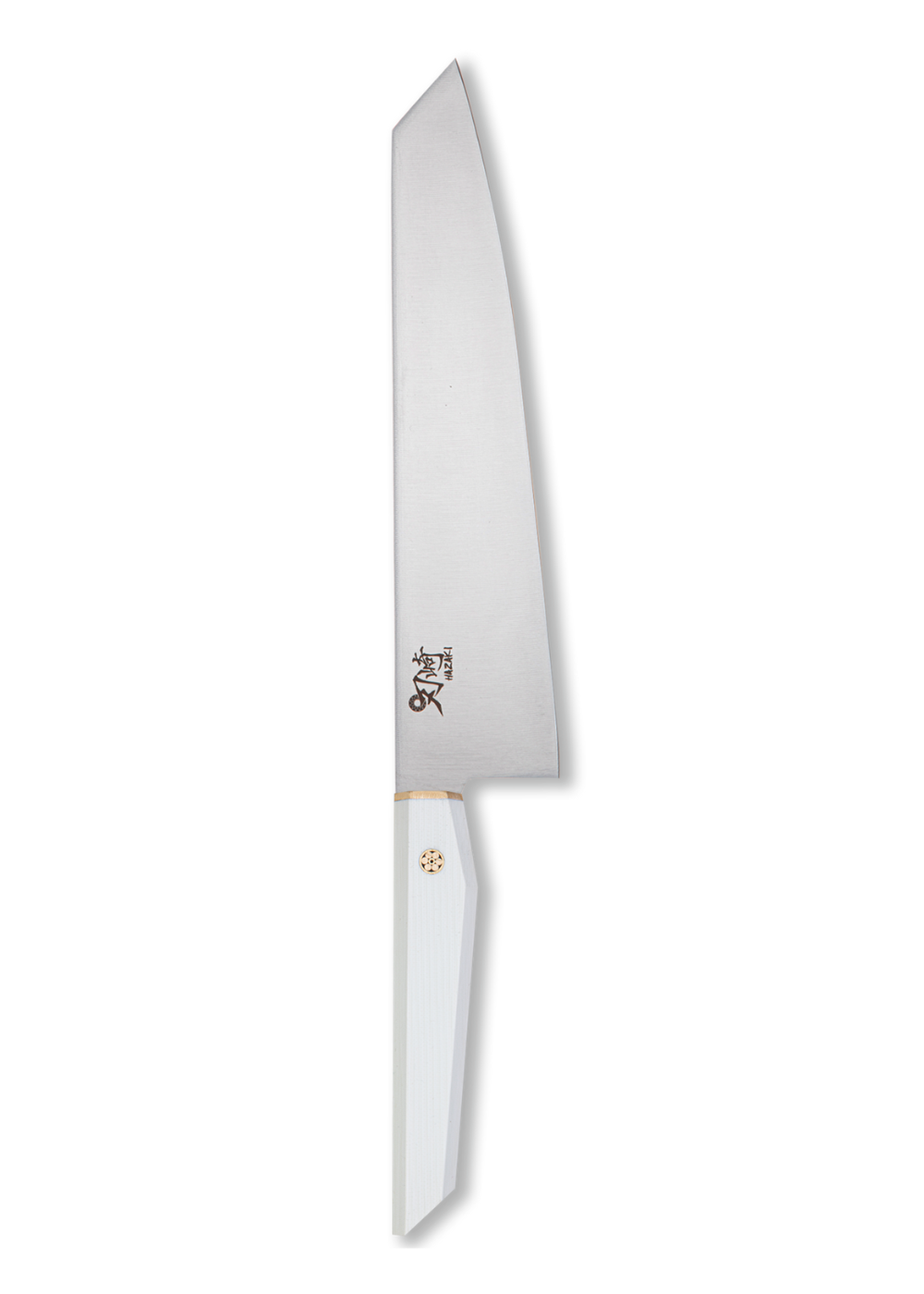Blade types
We offer 4 different blade types to make sure that you have the perfect shape for your needs.
The Gyuto is the Japanese version of the classic Western Chef’s knife. It is a true multi-purpose knife that can perform wide range of tasks, can be used with a variety of different cutting techniques and is suitable for cutting the vast majority of meats, fishes, vegetables and fruits.
The pointed blade tip of the Gyuto is good for precision cuts or working in tight spaces. The relatively flat heel section of the blade is excellent for ‘rock chopping’ (A technique where the food is cut, chopped, or minced, by rocking the knife edge from tip to heel during the cut). and it is also tall enough to provide good surface contact with the knuckles when ‘tap chopping’ with the middle or tip of the blade. Finally, virtually any portion of the blade can be utilized to either ‘push cut’, or ‘pull cut’.
The Japanese santoku knife is shorter than its Western-style counterparts, ranging from 150 to 200 millimeters in length, and is designed with a more balanced weight distribution. The word santoku actually translates to “three virtues” — some say these are meat, fish, and vegetables, while others interpret them to be chopping, slicing, and dicing.
Regardless of which trio you prefer, the santoku knife quickly grew to be the most popular kitchen knife in Japan, and very soon after, found its way into the hands of both home and professional chefs around the world.
Petty knife, sometimes also referred as paring or utility, is a smaller version of the Gyuto (Chef's knife), and is used for all sorts of delicate tasks where a larger knife would be unwieldy. Petty knives are used for peeling, paring, decorating, cutting out cores of apple quarters, removing eyes from potatoes, etc. It is a knife that should be in everyone's kitchen. Its usual length is between 120-150mm.
Next to a chef's knife, a paring knife is the most essential knife you should own. These small knives make it easy to peel fruits and vegetables, core tomatoes, hull strawberries, and do any type of knife work that takes precision. Most cooks have several of these handy knives in different styles and lengths.




